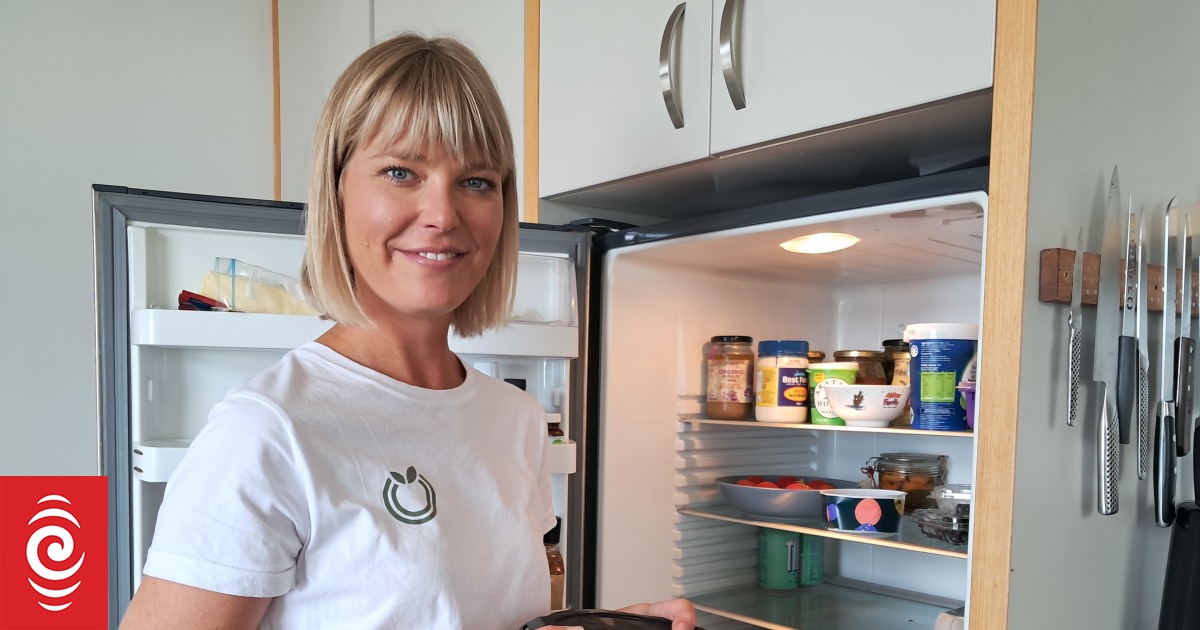
Food waste champion Kaitlin Dawson: ‘The freezer is an amazing pause button.’
Photo: Supplied
Kaitlin Dawson keeps two bowls of food scraps sitting on the table of her neat and tidy home.
“So right now, we can see the eggshells and the coffee grounds and a bit of last night’s dinner,” she explains in the third episode of RNZ’s Thrift podcast.
The director of NZ Food Waste Champions says it’s a very intentional way of keeping her household food waste in check.
“Out of sight, out of mind is a big cause of food waste so when we can see it, we will work really hard not to waste that.”

Photo: Supplied
Follow and listen to Thrift on Apple Podcasts, Spotify, [https://music.youtube.com/playlist?list=PLB06qFjAt4VAswuudToRvWQsgSln-Ch4c YouTube or wherever you get your podcasts.
Dawson is dedicated to rescuing and reusing food, and reminds us that Kiwis waste more than 130,000 tonnes of food a year, according to a 2023 Rabobank Kiwi Harvest survey.
“That’s enough to feed Dunedin for three months.”
And in dollar terms, that’s about $1500 a year we’re tossing into the food scraps bin.
Re-think food storage
Where you store your tucker is tied to the amount of waste. For instance, Dawson keeps bread – the most wasted food in Aotearoa – in the fridge.
“If we keep it in our bread box, during the hotter days it gets mouldy really quickly … we put half our loaf in the freezer straight away.”
Get smart about food safety to make your leftovers serve you longer.
Dawson suggests following the 2:2:2 rule: let it cool for two hours, then it can store in the fridge for two days and if you still haven’t used it, keep it in the freezer for up to two months. Know the difference between best before and use by dates. (Best before is peak product date – the date it probably tastes the best, but it can be eaten after that. Use-by is set by the food regulator, so best not to eat it after then.)
In the fridge, rotate your stock. For instance, down the bottom of Dawson’s fridge, the right-hand crisper is the use-first drawer and the left has fresher fruit and vege. Storage containers will keep produce fresher for even longer, particularly if you add a damp cloth.
Consider the kind of company your fresh stuff is keeping. For example, it’s best not to store potatoes alongside onions because they cause each other to sprout more swiftly.
Identify your habits and patterns
Be honest: which food do you usually get through, and what typically gets binned? Are you wasting part of the bread because you don’t like the crust? Don’t dig eating leftovers for lunch?
There are ways around these food waste habits – so get them on your radar and make adjustments. For instance, stash celery leaves, broccoli stems and all the vege peels in the freezer for your next stock or soup. Or turn those crusts into breadcrumbs.
“The freezer is an amazing pause button, so if it’s edible in some way, shape or form, it goes in the freezer,” Dawson says.
Focus on a couple of tweaks you can make to your life and embed them as habit. So, if it’s storage, set up your kitchen better to make space for a compost bin, or perhaps you need bags in your freezer to stash away green trimmings for stock.
Change your shopping habits
Pick the weird-shaped vegetables to minimise waste at the supermarket. Purchase things out of the bags so you only take home what you actually need.
“If we are continuously choosing a certain type of produce or to purchase more locally or whatever it is that’s important to you, they will listen and they will ensure that it’s there,” Dawson says.

